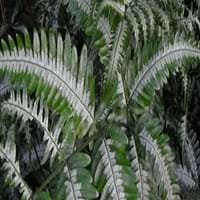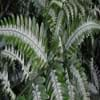Life Span
Perennial
Annual
Type
Fern
Flowering Plants
Origin
Central America, South America, Eastern Africa, Middle Africa, Southern Asia, Southeastern Asia
North America
Types
Pteris aberrans, Pteris abyssinica, Pteris actiniopteroides
Helianthus annuus, Heliantheae,
Habitat
Subtropical climates, Subtropical forests, Tropical regions
Dry areas, Open areas, Prairies
USDA Hardiness Zone
10-11
3-10
Sunset Zone
H1, H2, 24
A1, A2, A3, H1, H2, 1a, 1b, 2a, 2b, 3a, 3b, 4, 5, 6, 7, 8, 9, 10, 11, 12, 13, 14, 15, 16, 17, 18, 19, 20, 21, 22, 23, 24
Habit
Clump-Forming
Upright/Erect
Flower Color
Not Available
Brown, Yellow
Flower Color Modifier
Bicolor
Bicolor
Fruit Color
Not Available
Black, Chocolate, Ivory
Leaf Color in Spring
White, Green, Silver
Dark Green, Green
Leaf Color in Summer
White, Green, Silver
Green
Leaf Color in Fall
White, Green, Silver
Green
Leaf Color in Winter
White, Green, Silver
Not Available
Plant Season
Spring, Summer, Fall, Winter
Summer
Sunlight
Full Shade, Partial shade
Bright direct sunlight
Growth Rate
Medium
Very Fast
Type of Soil
Loam, Sand
Dry, Light, Well drained
The pH of Soil
Acidic, Neutral
Acidic, Alkaline
Soil Drainage
Average
Well drained
Bloom Time
Not Available
Early Fall, Early Summer, Fall, Late Spring, Late Summer, Summer
Tolerances
Not Available
Not Available
Where to Plant?
Container, Ground, Pot
Container, Ground, Pot
How to Plant?
By dividing rhizomes, tubers, Spores
Seedlings
Plant Maintenance
Medium
Medium
Watering Requirements
Average Water Needs
Keep the ground moist but not water-logged, Requires regular watering, Requires watering in the growing season
In Summer
Lots of watering
Lots of watering
In Spring
Moderate
Moderate
In Winter
Average Water
Average Water
Soil pH
Acidic, Neutral
Acidic, Alkaline
Soil Type
Loam, Sand
Dry, Light, Well drained
Soil Drainage Capacity
Average
Well drained
Sun Exposure
Full Shade, Partial shade
Bright direct sunlight
Pruning
Remove damaged leaves, Remove dead branches, Remove dead leaves, Remove dead or diseased plant parts
Prune ocassionally, Requires little pruning
Fertilizers
All-Purpose Liquid Fertilizer
All-Purpose Liquid Fertilizer
Pests and Diseases
Red blotch
Alternaria leaf blight, Apical chlorosis, Bacteria wilt, Bacterial leaf spot, Botrytis head rot, Charcoal rot, Crown gall, Downy mildew, Erwinia stalk rot, Fusarium stalk rot, Fusarium wilt, head rot, Phialophora yellows, Stem spot
Plant Tolerance
Not Available
Drought
Flower Petal Number
Single
Single
Foliage Texture
Fine
Coarse
Foliage Sheen
Matte
Matte
Attracts
Bees, Birds, Butterflies
Birds, Butterflies
Allergy
Not Available
Runny nose, Red eyes, Watery eyes, Sore eyes, Itchy eyes
Aesthetic Uses
Hanging Basket, Showy Purposes
Beautification, Bouquets, Showy Purposes, Used for decorating walls, fences, gates, hedges, etc.
Beauty Benefits
Not Available
Not Available
Edible Uses
Insignificant
Yes
Environmental Uses
Air purification
Air purification
Medicinal Uses
Not Available
Pulmonary afflictions
Part of Plant Used
Not Available
Flowers, Seeds, Stem
Other Uses
Showy Purposes
As Fertilizers, Economic Purpose, Oil is used in perfume, soaps, creams, etc., Showy Purposes, Used As Food, Used as Ornamental plant, Used for producing cooking oil
Used As Indoor Plant
No
Yes
Used As Outdoor Plant
Yes
Yes
Garden Design
Container, Feature Plant, Groundcover, Houseplant, Mixed Border, Tropical
Bedding Plant, Bonsai, Container, Edging, Edible, Feature Plant, Houseplant, Vegetable
Botanical Name
PTERIS argyraea
Helianths Annuus
Common Name
Brake Fern
Sunflower
In Hindi
Brake Fern Plant
Sūrajamukhī
In German
Brems Farnanlage
Sonnenblume
In French
Brake Fern Plante
Tournesol
In Spanish
Planta del helecho del freno
Girasol
In Greek
Φρένο Fern Plant
ηλιοτρόπιο
In Portuguese
Brake Planta Fern
Girassol
In Polish
Hamulec Fern roślin
słonecznik
In Latin
Fregit Fern Plant Families
Helianthus
Phylum
Tracheophyta
Magnoliophyta
Class
Polypodiopsida
Magnoliopsida
Order
Polypodiales
Asterales
Family
Pteridaceae
Asteraceae
Clade
Not Available
Not Available
Tribe
Not Available
Heliantheae
Subfamily
Pteridoideae
Helianthodeae
Season and Care of Brake Fern and Sunflower
Season and care of Brake Fern and Sunflower is important to know. While considering everything about Brake Fern and Sunflower Care, growing season is an essential factor. Brake Fern season is Spring, Summer, Fall and Winter and Sunflower season is Spring, Summer, Fall and Winter. The type of soil for Brake Fern is Loam, Sand and for Sunflower is Dry, Light, Well drained while the PH of soil for Brake Fern is Acidic, Neutral and for Sunflower is Acidic, Alkaline.
Brake Fern and Sunflower Physical Information
Brake Fern and Sunflower physical information is very important for comparison. Brake Fern height is 90.00 cm and width 60.00 cm whereas Sunflower height is 8.50 cm and width 2.46 cm. The color specification of Brake Fern and Sunflower are as follows:
Brake Fern flower color: Not Available
Brake Fern leaf color: White, Green and Silver
Sunflower flower color: Brown and Yellow
- Sunflower leaf color: Dark Green and Green
Care of Brake Fern and Sunflower
Care of Brake Fern and Sunflower include pruning, fertilizers, watering etc. Brake Fern pruning is done Remove damaged leaves, Remove dead branches, Remove dead leaves and Remove dead or diseased plant parts and Sunflower pruning is done Prune ocassionally and Requires little pruning. In summer Brake Fern needs Lots of watering and in winter, it needs Average Water. Whereas, in summer Sunflower needs Lots of watering and in winter, it needs Average Water.



